SAT Math Lesson Plan 30: Trigonometry
|

|
|
SAT Math Lesson Plan 29: Transformations in Geometry
|

|
|
SAT Math Lesson Plan 28: Coordinate Geometry
|

|
|
SAT Math Lesson Plan 27: Quadrilaterals and Polygons
|

|
|
SAT Math Lesson Plan 26: Circle Theorems and Tangents
|

|
|
SAT Math Lesson Plan 25: Circles and Their Equations
|

|
|
SAT Math Lesson Plan 24: Triangles and Their Properties
|

|
|
SAT Math Lesson Plan 23: Lines and Angles
|

|
|
SAT Math Lesson Plan 22: Modeling with Functions
|

|
SAT Math Lesson Plan 22: Modeling with Functions In SAT Math Lesson 22, students will learn how to interpret, construct, and apply mathematical models using functions. This lesson covers: |
SAT Math Lesson Plan 21: Polynomials and Their Graphs
|

|
Lesson Plan: SAT Math Lesson 21: Polynomials and Their Graphs In SAT Math Lesson 21, students will explore the key characteristics of polynomials and how to analyze and graph them. This lesson covers: |
SAT Math Lesson Plan 20: Function Composition and Inverses
|

|
|
SAT Math Lesson Plan 19: Functions and Their Properties
|

|
|
SAT Math Lesson Plan 18: Rational Expressions and Equations
|

|
|
SAT Math Lesson Plan 17: Exponential and Radical Equations
|

|
|
SAT Math Lesson Plan 16: Solving Quadratic Equations
|

|
|
SAT Math Lesson Plan 15: Quadratic Equations and Factoring
|

|
|
SAT Math Lesson Plan 13: Probability and Combinatorics
|

|
|
SAT Math Lesson Plan 12: Measures of Central Tendency
|

|
|
SAT Math Lesson Plan 14: Advanced Probability and Expected Value
|

|
SAT Math Lesson Plan 14: Advanced Probability and Expected Value Lesson 14 in this SAT Math Prep series explores advanced probability and expected value—topics that account for approximately 5–7% of SAT Math questions. |
SAT Math Lesson Plan 11: Data Interpretation
|

|
|
Lesson Plan Collection: SAT Math
|

|
This is a collection of lesson plans for preparing for the SAT. These lesson plans include a placement test for students to determine if they need to review that lesson or work on another. |
SAT Math Lesson Plan 9: Rates, Units, and Conversions
|

|
Lesson Plan: Rates, Units, and Co |
SAT Math Lesson Plan 10: Word Problems and Real-World Applications
|

|
SAT Math Lesson Plan 10: Word Pro |
SAT Math Lesson Plan 8: Percents and Percent Change
|

|
SAT Math Lesson Plan 8: Percents |
SAT Math Lesson Plan 6: Systems of Equations in Word Problems
|

|
SAT Math Lesson Plan 6: Systems o |
SAT Math Lesson Plan 7: Ratios and Proportions
|

|
SAT Math Lesson Plan 7: Ratios an |
SAT Math Lesson Plan 5: Absolute Value Equations and Inequalities
|

|
|
SAT Math Lesson Plan 3: Systems of Equations
|

|
SAT Math Lesson Plan 3: Solving S |
SAT Math Lesson Plan 4: Systems of Linear Inequalities
|

|
SAT Math Lesson 4: Systems of Lin |
SAT Math Lesson Plan 2: Linear Inequalities
|

|
SAT Math Lesson Plan2: Linear Ine |
SAT Math Lesson Plan 1: Linear Equations and Expressions
|
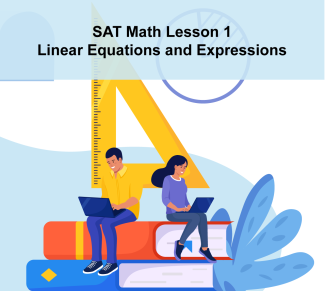
|
|
Lesson Plan Collection: Nets of 3D Figures
|

|
This 4-lesson sequence covers the topic of nets of 3D figures. |
Lesson Plan: Nets of 3D Figures, Part 4
|
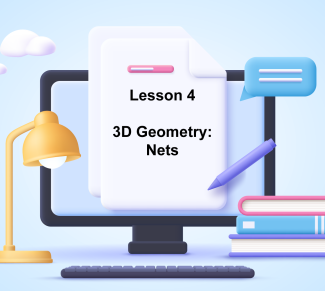
|
Lesson Plan: Extensions and Real-World Applications of Nets and 3D Shapes This engaging lesson explores advanced applications of 3D nets and their real-world connections in engineering, architecture, and packaging design. |
Lesson Plan: Nets of 3D Figures, Part 3
|
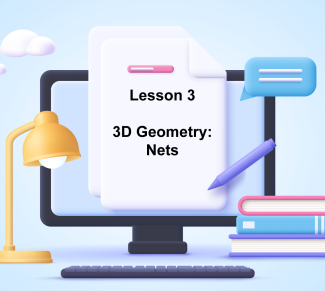
|
Lesson Plan: Advanced Polyhedra and Cylindrical Shapes In this interactive lesson, students explore the geometry of cylinders and advanced polyhedra, including the dodecahedron and icosahedron. |
Lesson Plan: Nets of 3D Figures, Part 2
|
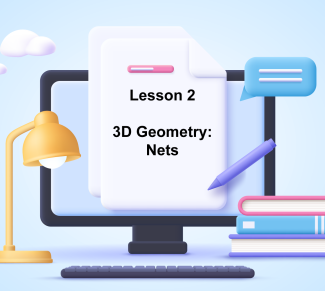
|
Lesson Plan: Pyramids, Tetrahedra, and Octahedra In this engaging lesson, students explore the geometry of pyramids, tetrahedra, and octahedra using 2D nets and 3D models. |
Lesson Plan Collection: Cross-Sections of 3D Figures
|
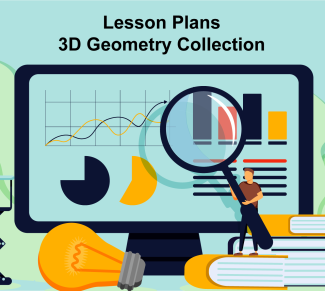
|
These lesson plans cover the topic of cross-sections of 3D Figures. |
Lesson Plan: Nets of 3D Figures, Part 1
|
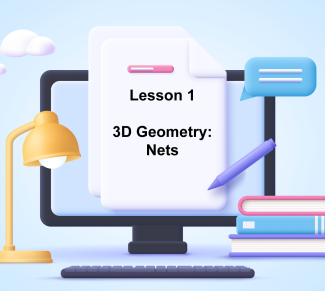
|
Lesson Plan: Introduction to Nets and Basic 3D Shapes In this engaging and interactive lesson, students explore the connection between 2D nets and 3D geometric figures. |
Lesson Plan: Cross-Sections of 3D Figures, Part 3
|
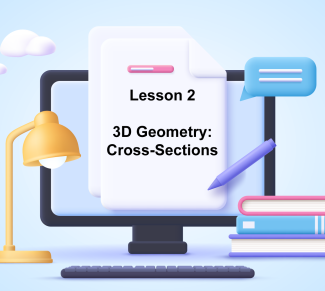
|
Lesson Plan: Cross-Sections of Triangular Prisms, Antiprisms, and Tetrahedrons In this engaging geometry lesson, students will explore cross-sections of triangular prisms, antiprisms, and tetrahedrons. |
Lesson Plan: Cross-Sections of 3D Figures, Part 2
|
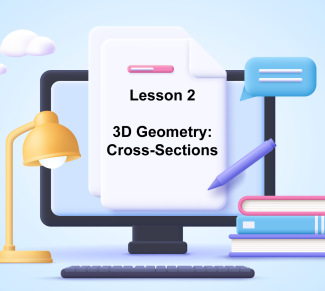
|
Lesson Plan: Cross-Sections of Rectangular Prisms, Spheres, and Pyramids In this engaging geometry lesson, students will explore how rectangular prisms, spheres, and pyramids are affected by different slicing planes. |
Animated Math Clip Art--3D Geometry--Horizontal Cross-Section of a Rectangular Prism
|

|
Animated Math Clip Art: Horizontal Cross-Section of a Rectangular Prism This animated math clip art illustrates how a horizontal plane intersects a rectangular prism, forming a two-dimensional cross-section. |
Animated Math Clip Art--3D Geometry--Vertical Cross-Section of a Rectangular Prism
|

|
Animated Math Clip Art: Vertical Cross-Section of a Rectangular Prism This animated math clip art visually demonstrates how a vertical plane intersects a rectangular prism, producing a two-dimensional cross-section. |
Lesson Plan: Cross-Sections of 3D Figures, Part 1
|
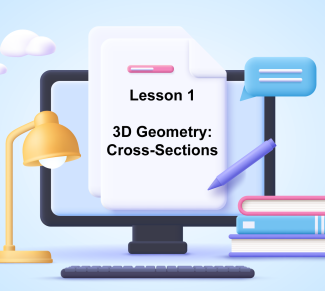
|
Lesson Plan: Cross-Sections of 3D Figures In this engaging math lesson, students explore cross-sections of cubes, cylinders, and cones through interactive activities, real-world examples, and animated visuals. |
Lesson Plan--Rational Expressions--Lesson 4--Multiplying and Dividing Rational Expressions
|
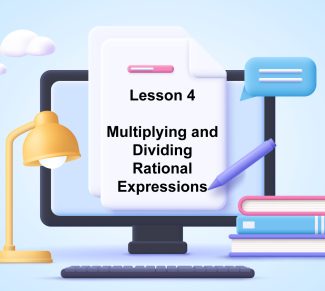
|
Lesson Plan: Multiplying and Dividing Rational Expressions In this high school algebra lesson, students will learn how to multiply and divide rational expressions by applying fraction rules and algebraic simplification techniques. Understanding these operations is essential for working with complex algebraic expressions and solving rational equations. |
Lesson Plan Collection: Rational Expressions
|
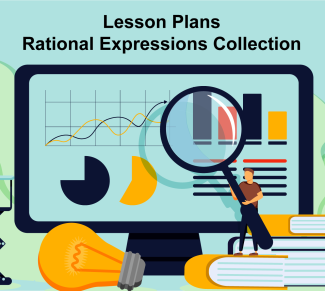
|
This five-lesson sequence of lessons covers the topic of Rational Expressions and is meant for high school students. |
Lesson Plan--Rational Expressions--Lesson 3--Adding and Subtracting Rational Expressions
|
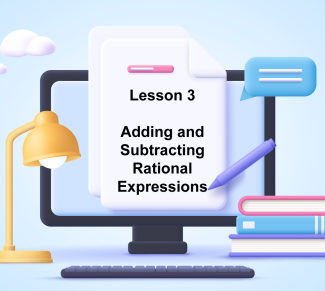
|
Lesson Plan: Adding and Subtracting Rational Expressions In this high school algebra lesson, students will learn how to add and subtract rational expressions by finding common denominators and simplifying algebraic fractions. |
Lesson Plan--Rational Expressions--Lesson 5--Complex Rational Expressions
|
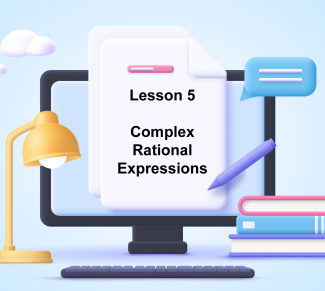
|
Lesson Plan: Complex Rational Expressions In this high school algebra lesson, students will learn how to simplify complex rational expressions—fractions that contain other fractions in the numerator, denominator, or both. |
Lesson Plan--Rational Expressions--Lesson 2--Simplifying Rational Expressions
|
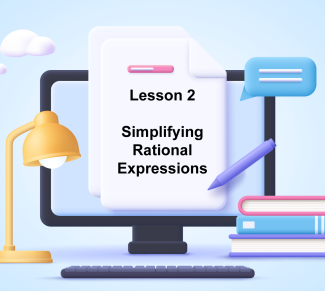
|
Lesson Plan: Simplifying Rational Expressions In this high school algebra lesson, students will learn how to simplify rational expressions by applying factoring techniques and identifying common factors. Rational expressions, which are algebraic fractions, can often be simplified by reducing common terms in the numerator and denominator. |
Lesson Plan--Ratios, Proportions, and Percents (Gr 8)--Lesson 5--Analyzing and Comparing Linear Relationships, Including Parallel and Perpendicular Lines
|
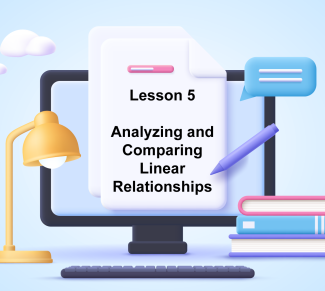
|
Lesson Plan: Parallel and Perpendicular Lines In this lesson, students explore the properties of parallel and perpendicular lines in coordinate geometry. They will learn how to identify these lines based on their slopes, determine equations for parallel and perpendicular lines, and apply these concepts to solve real-world and mathematical problems. |
Lesson Plan Collection: Ratios, Proportions, and Percents (Gr 8)
|
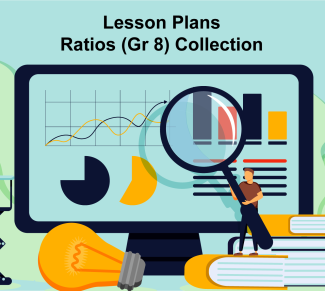
|
This five-lesson sequence covers the topic of Ratios, Proportions, and Percents and is appropriate for grade 8. |
Lesson Plan--Rational Expressions--Lesson 1--Introduction to Rational Expressions
|
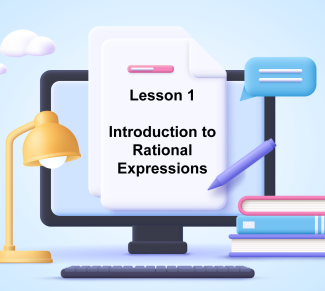
|
Lesson Plan: Introduction to Rational Expressions In this lesson, students will explore the fundamentals of rational expressions, a key concept in algebra. They will learn how to identify, simplify, and evaluate rational expressions by applying their understanding of fractions and algebraic operations. |




















































